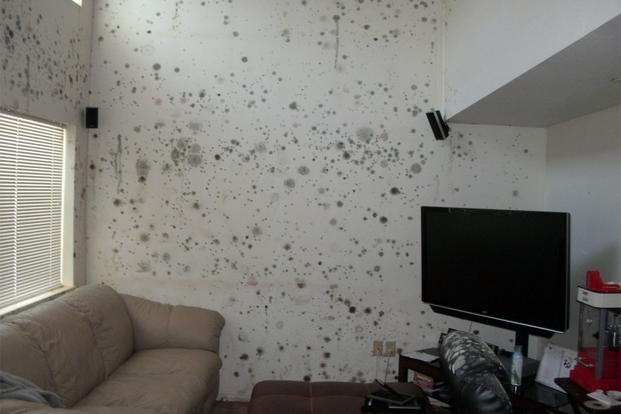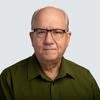You may have seen news stories about mold causing problems in base housing or military barracks and wondered what was the big deal about it, especially if you have lived in a damp or tropical climate.
There are many different kinds of mold, some may be harmful, some not. Most healthy people have little to worry about from a small amount of most types of mold growing on an indoor surface.
See: Mold Issues, Poor Housing Conditions for Troops Are Rampant. What Can Congress Do?
What Is Mold, and Why Is it Harmful?
Mold is a type of fungus found almost everywhere on the planet. In buildings, it is usually found on wet or damp porous materials, especially on wood, carpet, cotton, drywall or other organic materials. Mold grows best in warm, humid environments with poor ventilation.
See: More than 1,000 Fort Bragg Soldiers Displaced After Surprise Decision to Evacuate Old, Moldy Barracks
Black mold is what most people think of when the words "dangerous or 'toxic' mold" are mentioned; that is because certain types of mold spores, especially Stachybotrys chartarum, which is often dark in color, can contain toxic chemicals that can be dangerous if eaten. Black mold is usually caused by heavy water damage left unchecked for weeks, so it is fairly rare in housing areas.
Health Effects of Mold
The jury is still out on how exposure to mold can affect people.
According to WebMD, while eating black mold can make you ill, there is no link to inhaling black mold and any disease or illness unless you're allergic to it. Infections caused by mold are extremely rare. Most symptoms people believe occur from mold exposure are actually caused by other issues including allergies and bacterial or viral infections that are usually related to high interior humidity, of which mold is a sign.
However, according to the Centers for Disease Control (CDC), a 2004 study found sufficient evidence to link indoor exposure to mold with upper respiratory symptoms, such as coughing and wheezing in otherwise healthy people. It also increased asthma symptoms in people with asthma; and had other health effects on those with weakened immune systems.
The bottom line is: Mold can be harmful if you're allergic to it, and it is certainly unsightly. If you see it in your living space, it should be removed sooner rather than later.
What to Do if You Find Mold in Your Living Space
According to the Air Force, if you find mold in your home, you should clean it and try to prevent it from coming back. For hard surfaces, you can use soapy water or a household cleaner with a stiff brush to scrub away any visible mold. Bleach and special store-bought mold cleaners can be used sparingly and with adequate ventilation and personal protective equipment. It is virtually impossible to remove all mold and mold spores, so even after cleaning the affected area, you should try to remediate any issues like excess humidity, poor ventilation or other sources of moisture to prevent the mold from returning.
If you live in government housing or privatized housing on base, you should contact your housing office or command to seek help. Some bases have special teams to fight mold in government housing. However, on some bases and depending on the type and cause of the mold, you may be better off trying to fix it yourself. To see what the situation is at your command, the best and fastest solution is to check out your local military community's social media sites for assistance. Others at your command may have dealt with similar situations before and can offer fast, easy solutions.
If you live in private housing off base, your best option may be to try to fix it yourself. Professional mold removal companies can charge thousands of dollars to rid a house or apartment from mold. However, without fixing the problem, the mold will soon return. Those with special situations may be better served by seeking a professional solution.
Getting a home mold testing kit at a home improvement store, or paying hundreds of dollars for a professional mold test, is generally not recommended. There are thousands of mold species and no accepted national or international mold health standards. If you or a family member is experiencing medical symptoms that may be related to mold, you are probably better off just removing the mold, improving ventilation and controlling sources of moisture.
The best way to deal with mold in any living area is to try to remove it first, then figure out how to keep it from coming back.
How to Prevent Mold Growth in Your Military Housing
The Environmental Protection Agency recommends keeping your indoor relative humidity between 30%-60% to reduce mold growth. Rooms that have high moisture content, like bathrooms, kitchens and laundry rooms, may need a dehumidifier or to be vented outdoors. If water accumulates on your windows, wipe it off, especially around the edges; also turning on any ceiling fans may help improve ventilation to affected areas.
Want to Know More About the Military?
Be sure to get the latest news about the U.S. military, as well as critical info about how to join and all the benefits of service. Subscribe to Military.com and receive customized updates delivered straight to your inbox.
This article was updated to reflect information about mold allergies and what to do about mold in military housing.




















